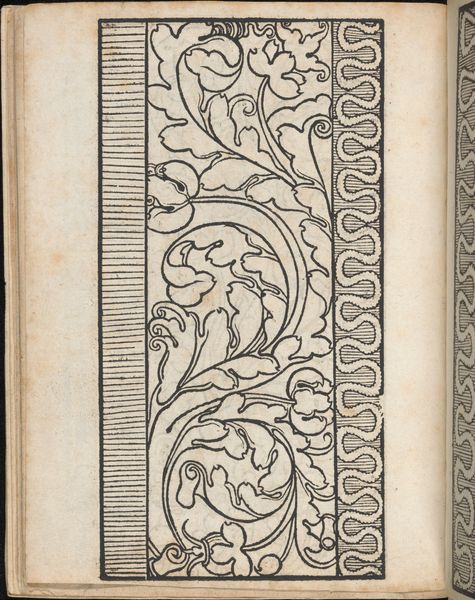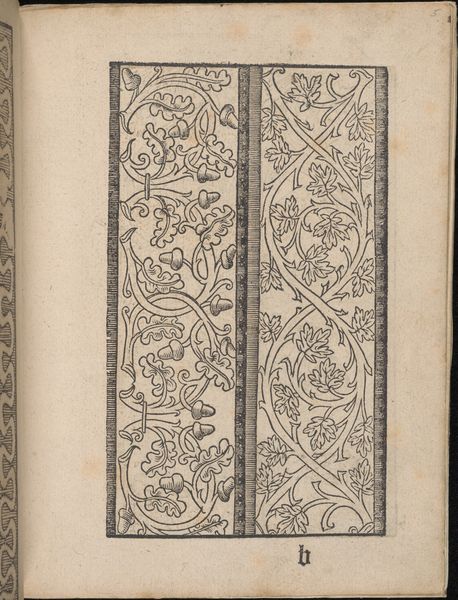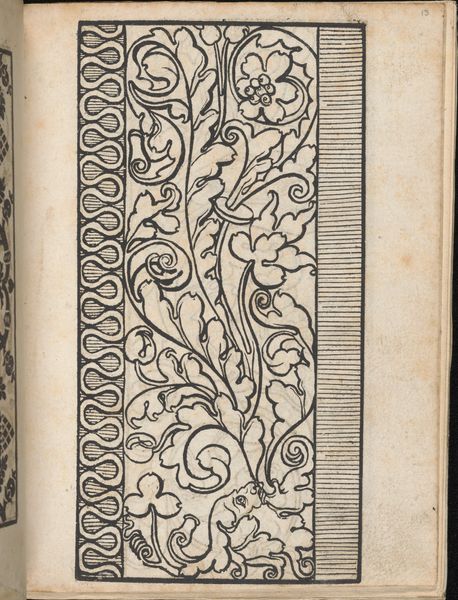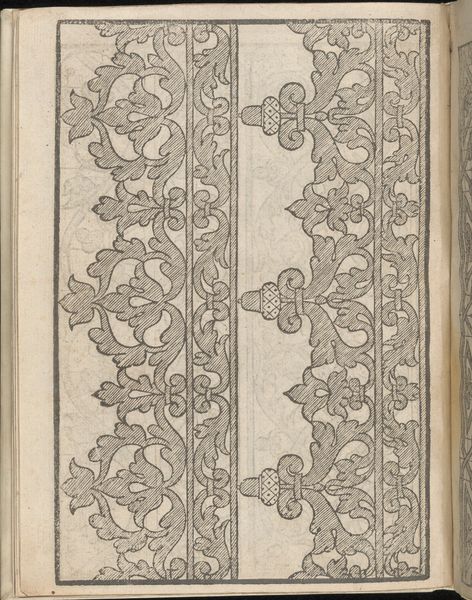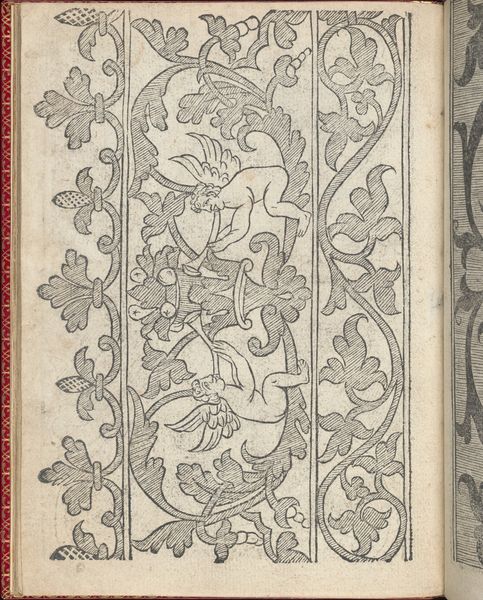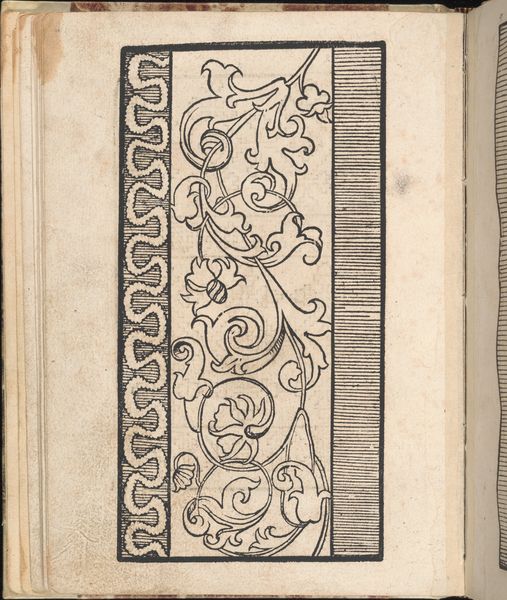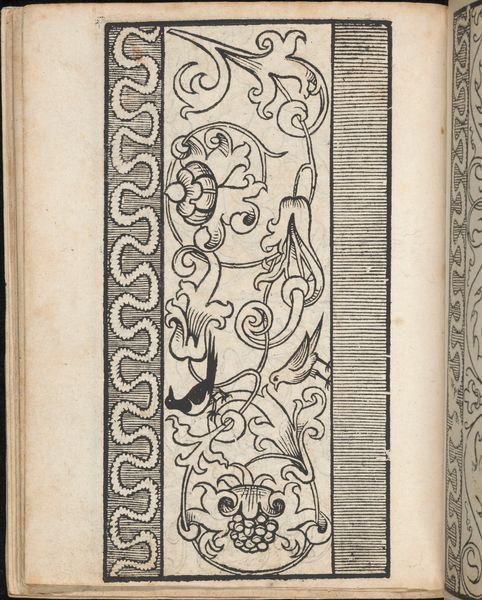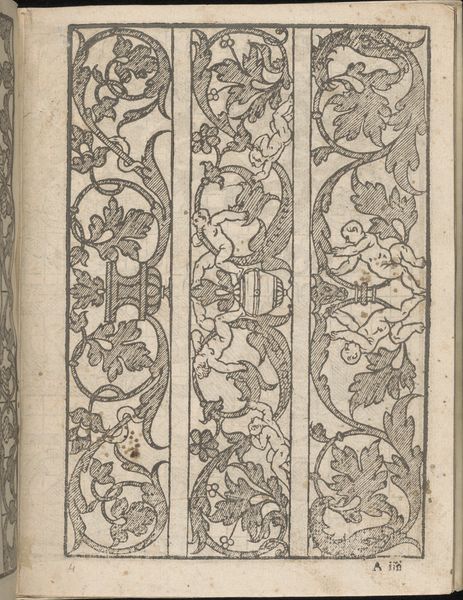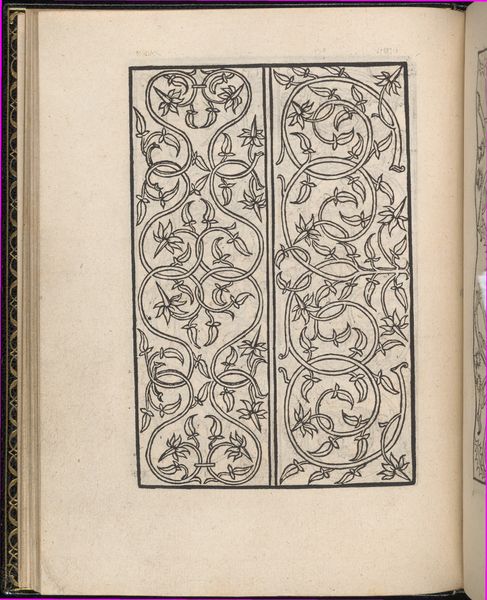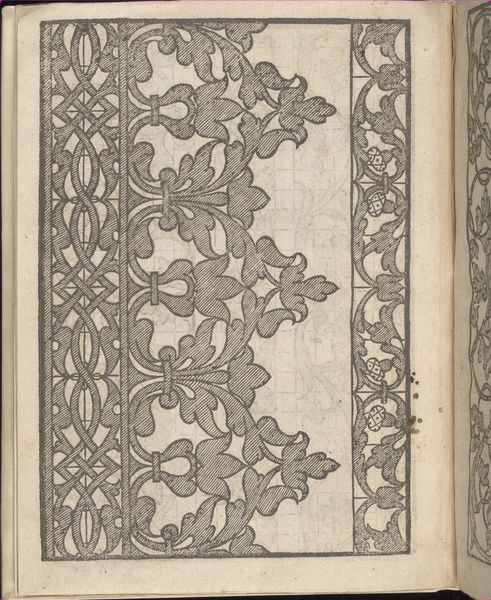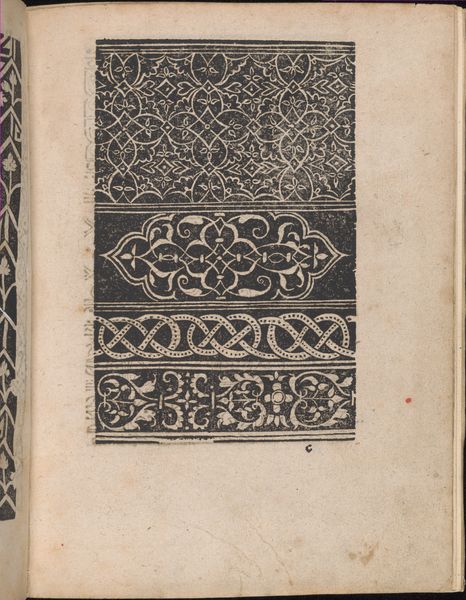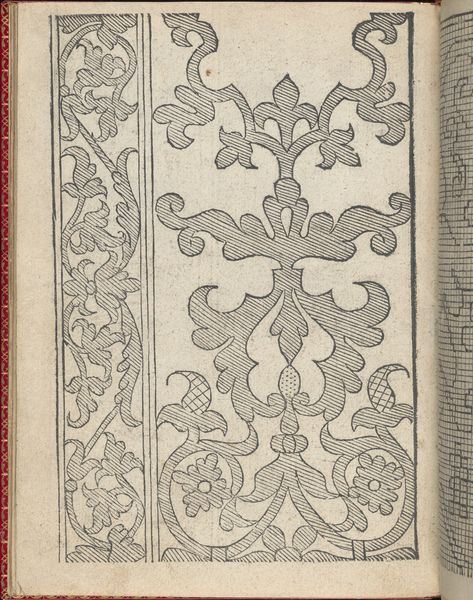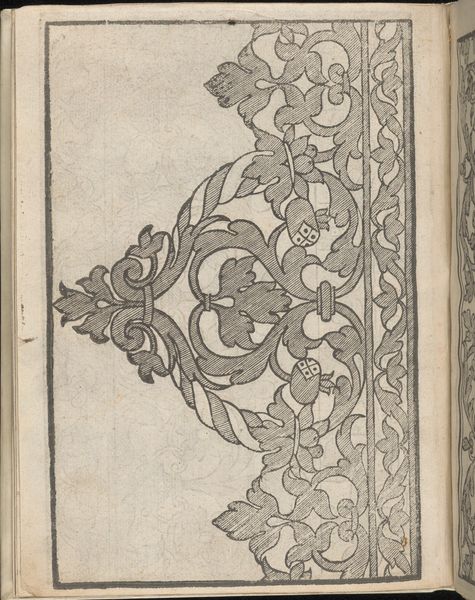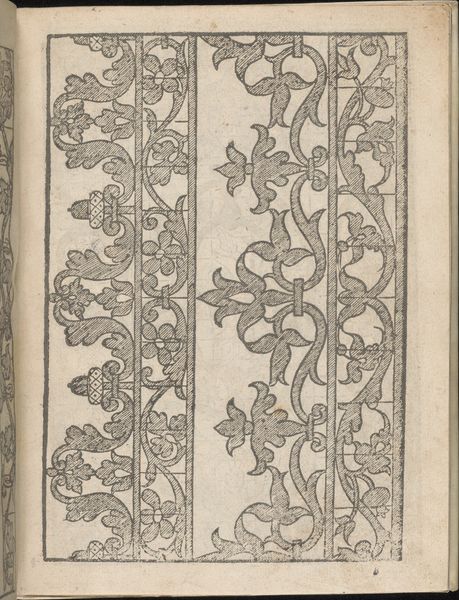
Ein new Modelbuch..., page 2 (verso) 1524
0:00
0:00
drawing, graphic-art, ornament, print, woodblock-print, woodcut
#
drawing
#
graphic-art
#
aged paper
#
ornament
#
toned paper
#
ink paper printed
# print
#
book
#
sketch book
#
personal sketchbook
#
woodblock-print
#
woodcut
#
ink colored
#
men
#
pen work
#
sketchbook drawing
#
northern-renaissance
#
sketchbook art
Dimensions: 7 5/16 x 5 3/8 in. (18.5 x 13.6 cm)
Copyright: Public Domain
This is a page from "Ein new Modelbuch," created around 1530 by Johann Schönsperger the Younger, using woodcut techniques. The design is dominated by sinuous plant motifs that speak to a broader cultural fascination with nature. The coiling, curling forms are not merely decorative. They echo motifs found in classical art, where foliage, vines, and tendrils represent vitality and growth. Think of the acanthus leaves adorning Corinthian capitals, symbols of rebirth. In Schönsperger's design, these natural forms take on a life of their own, embodying the restless energy of the Renaissance. These spiraling forms evoke something deeper within the human psyche, as they reappear across cultures, suggesting a primal connection to the natural world. Each tendril, each leaf, is a testament to the enduring power of visual symbols. These patterns reflect our own internal rhythms and instinctive understanding of life's cyclical nature.
Comments
No comments
Be the first to comment and join the conversation on the ultimate creative platform.
